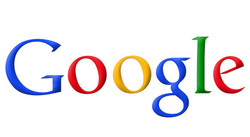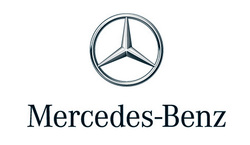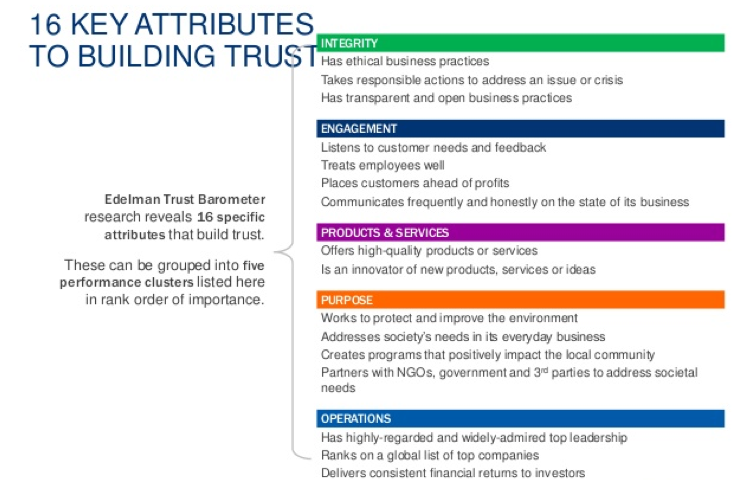|
We are still in the beginning of the year so I would like to tune into what I believe will be the key brand and marketing trends for 2015. You have probably already heard about the Big Macro Trends – economic slowdown in many countries, political uncertainty, a power shift from West to East, technological convergence. And so on.
I chose instead to focus on consumer trends for brands to watch out for and act upon in 2015. Authenticity & transparency. This is an area where consumers put serious pressure on companies and there is no way back. If you want to be successful in the long run you have to be honest about what your brand stands for, how you can deliver differently and what is your purpose. When your brand make mistakes, admit and correct them as soon as possible. With the power of Internet, rumors and facts spread with immense pace. If your brand has a vision of making this world a little bit better, show it don't just tell it. That will establish trust and respect among your customers. Memorable brand experiences. This is not something new but it is eminently important in today's arduous competition. With so much buzz out there, you have to create truly marvelous experiences to make your customers remember and prefer your brand instead of your competitors. How do you cultivate a memorable brand? First you need to define exactly what your brand experience should be and how it is better and different than the rest. Secondly, you need to deliver that brand experience seamlessly across all customer touch points where everyone in your organisation has to act as an inspired brand ambassador. Thirdly, your brand has to deliver not only what customers expect but also an additional personal touch with tangible or intangible value. Why? Because it is this unexpected “personal touch" that convert your customers brand experience into a truly memorable one. Digital is a necessity. Until recently digital was seen as a supplement to the traditional marketing mix where it now should be seen as the essential platform from where your brand communicates with its diverse audiences. Social media is an ever-evolving medium that will reward brands for originality, relevance and creativity. Customers anticipate you to be agile, personal and interactive in your digital conversations with them. They resist homogenization and prefer human connections along with quality content, especially if we are talking about the Millennials. Brands need to adjust to those demands and move towards individualized and localized marketing activities, utilizing pertinent digital channels. All those expectations require companies to promote an internal culture that embrace the latest digital technology in addition to having the skills and insights to manage it successfully. Relationships and people matters. Crowd funding is rapidly increasing where a person or start-up with limited resources and grand dreams can be supported by the power of a larger crowd, just because that dream matters to them as well. Locally produced goods, specifically food are in immense demand and people are willing to pay lofty prices just to buy from someone they have a relationship with. We favour the local coffee shop on the corner just because the barista knows us. Building strong relationships is important for any brand. Local brands gain grounds. For a long time China was the heaven for all global brands with a seemingly endless appetite for international premium brands. That has changed. Quickly. Chinese consumers are now starting to take pride in purchasing their local brands instead, especially since the quality has increased considerably and many local brands have created an alluring image. The same tendency can be seen in other markets across the world. Local understanding and pride vs. global muscles. An inspiring story wins. People love stories and brands with great stories to tell are more likely to win the hearts and minds of consumers. Your story should build upon authenticity and emotional brand values. Align the brand story with your entire communication and each consumer interaction to create a meaningful differentiation. I want it now. Consumers crave to have their products and services immediately without even visiting a retailer. To get their attention you are obliged to deliver a customized online experience with superior service and extraordinarily nimble delivery. There is no time to waste in life. Brands and marketers face challenges every day, by virtue of operating in a constant state of change, so in what way can these trend insights enable your brand to endure more success during 2015? Through providing you with a chance to explore and embrace new opportunities, transform your old blue print and empower you to perform as a brand champion. Time to design a new game plan. A name can be described as "a word or set of words by which a person or an object is known, addressed, or referred to". However, it is so much more than just that. A name gives associations, meaning and flavour to a person, an object or a brand. It reminds of experiences and it will quickly give you certain emotions and connotations such as a good, bad or neutral gut feeling. So what’ is in a name? Actually, a lot, much more than you can imagine. Choosing a name for your company carefully is therefore one of the most important decisions you will make, especially for a start-up. Choosing a name can be a tricky thing if you don't know the relevant techniques. When you know the methods of developing a brand name it will be much easier for you to pick the right name for your company, one that makes you stand out from the crowd. To inspire you, let's explore some popular name techniques and examples of how world famous brands got their names. 1. Descriptive: A name that says what the company/brand does. Usually the company uses two different words to create one brand name.  China Mobile is a Chinese state owned telecommunications company that provides nationwide telecoms services. Other examples: Hoover, General Electric and Whole Foods. 2. Coined/Invented: Playful or poetically constructed names that are based on rhythm and the experience of saying them. It sounds like a word but have no dictionary meaning.  Google The name Google is a play on the word “googol” which is a mathematical term for the number represented by the numeral 1 followed by 100 zeros. This reflects the founders, Larry Page and Sergey Brins, mission to organize infinite amount of information on the web. Other examples: Yahoo, Bing and Accenture 3. Acronym: An abbreviation formed from the initial letters of other words and pronounced as a word.  IKEA is inspired by the founder’s initials “ Ingvar Kamprad”, the first letter of his family farm “Elmtaryd” and his birthplace “Agunnaryd”. Other examples: IBM, BMW and SAP 4. Evocative: Evocative brand names say nothing about what you do. Instead they evoke the positioning of a company or product through an unexpected, yet relevant hint or perception.  Victoria’s Secret. The company was founded by Roy Raymond based on the insight hat most men felt embarrassed when buying lingerie for their women. He set up a shop in Palo Alto in 1977 where men were suppose to feel comfortable in an American vision of an English boudoir. The brand was called Victoria’s Secret after Queen Victoria, who was the regent during a very repressed era in time. The name suggested a veil of respectability pulled over “secrets” hidden underneath. However, in marketing only to men, Raymond forgot that most of a women’s underwear is purchased by the women themselves. A new owner took over and in the 1990s the marketing and stores changed to have more appeal for women, leading to today’s success. Other examples: Virgin Airlines, Innocent Smoothies and Tropicana 5. Founders name/merged: Simply a name that consists of the founders names.  Mercedes-Benz. Karl Benz was a German innovator and founder of the motor company Benz & Cie in 1883. Benz largest rival was Daimler, another German motor company, founded by Gottlieb Daimler. One of Daimler’s business partners was Austrian investor Emil Jellinek who had a passion for motor sport. Jellinek was promoting, selling and racing in Daimler cars under the pseudonym “Mercedes”. Mercedes was the Spanish name of his young daughter, meaning, “grace”. Jellinek's racing success in the important Nice Week in 1901 led to an agreement with Daimler that gave name to a new innovative engine called Daimler-Mercedes. In 1926, Benz and Daimler merged and formed a new company called Daimler-Benz AG where a joint trademark was created - the famous three-pointed star – which still adorns Mercedes-Benz vehicles. Other examples: Adidas, Johnson & Johnson and Ericsson. 6) Real words: Names that are re-purposed words and work through a metaphor or indirect association. Such names cannot be generically descriptive as they wouldn’t be protectable trademarks. Can be difficult and expensive to trademark.  Apple: The name came from a driving conversation between the founders, Steve Jobs and Steve Wozniak. Steve Jobs was coming back from a visit to an “apple orchard” and suggested a name for their company – Apple Computer. They both tried to come up with technical-sounding names that were better, but couldn’t think of any good ones. Apple was so much better and that became the brand. Other examples: Orange, Fox and Amazon. 7) Compound: A name that is a hybrid, formed from two existing words, often with the first word receiving the main emphasis in pronunciation. An easy way to create new words with limitless number of possible combinations.  YouTube: The history of YouTube began in 2005 when the founders activated the Internet domain name "YouTube.com" and started to create a video-sharing website on which users could upload, share, and view videos. Other examples: Band Aid, LinkedIn, Face Book and Firefox. Naming process
With the above naming techniques in mind you can now start to create a name for your company. At Lavandel, we recommend using the following process: 1) Start by writing a brief with criteria’s and considerations for the new name. Use your vision, brand strategy and the market your company is operating within. 2) Conduct a creative name brainstorming consisting of key people who thoroughly understand your brand and vision. If you have a brand platform already, use it as a starting point as it should be aligned with the new name. 3) Define themes that are appropriate for your brand, based on your brand values and brand essence. Explore the different types and techniques of names (common are descriptive, evocative, coined/invented, compounds, associations, experiential, acronyms and merged/ founders name). All of those types can be included in your brainstorming as long as it supports your brand objectives. 4) Evaluate the names. To find a winning name you need to ask yourself the following questions: · Is it distinctive and unique? Connected to your brand essence? Does it differentiate you from other companies in the market? · Is it memorable? · Does it inspire your target audience? Is it simple and clear with positive connotations? · Is it easy to spell and pronounce? How does it sound? Is it short and concise? · Does it give appropriate associations? Does it mean something else in another language? Is it culturally neutral in a global context? · Does it have legs and longevity? Can it grow with your brand and be used for sub-brands? · Can it be protected? 5) Choose a name that can tell a story behind your company. The story can expand over time and enable your brand to stand out in the crowd. 6) When you have decided for a name it is necessary to trademark it in all current or future markets where you will operate. You also need to consider all digital channels where you need to own your name. 7) Time to launch and implement your new name across all channels. Be sure to have a plan for managing your brand long-term as this will be one of your key investments for future success. Image sources: Apple, Mercedes-Benz, Victoria's Sectret, IKEA, China Mobile, YouTube in brands we trust - or don't we? How to build and keep brand trust in today's global world.18/1/2015
Every marketer and brand knows that a customer's trust is a real treasure and should be treated as a gold asset. A brand that enjoys high trust from its customers is also more likely to be rewarded with their loyalty, recommendations and personal information. As consumers, we trust our favourite brands as we trust a good friend, nurtured in a long-term relationship. Research shows that when people trust a brand, more than 80% will recommend it to other people. Signs of trusted brands are that they are perceived as leaders who delivers value, are genuine and transparent, surprise and excites their customers in addition to sharing an emotional relationship. Some brands that frequently ranks high on different lists for brand trust are Samsung, Apple, Amazon, BMW, Starbucks, Coca-Cola, Ritz-Carlton, Nivea, Sony, Toyota and IKEA.*  Edelman Trust Barometer Edelman has just released their “Trust Barometer” for 2015 where over 33,000 respondents in 27 countries have given their opinions about trust and credibility**. It is an interesting reading and I wanted to share with you some of the key insights: 2014 was the year of the unexpected and unimaginable events, leading to an evaporation of trust across all institutions – countries, governments, businesses and NGO’s are all affected in a negative way. Due to the Barometer, there are four factors that impact trust in business; industry sector, enterprise type, country of origin and leadership. Technology is the most trusted sector, but on a declining trend. The most trusted countries of origin are Sweden, Canada and Germany. When it comes to enterprises, family owned business are the most trusted in developed countries with a high premium vs. corporations. But in developing countries, big businesses are the most trusted. Finally, when it comes to leadership we favour academics and industry experts over CEO’s who are not seen as credible spokespersons. Think about every time you hear about a brand being in trouble and the CEO makes a statement, how often does it sound trustworthy to you? Trust in Innovation For the first time Edelman's Trust Barometer asked the public about their levels of trust in innovation. Trust is essential to innovation but their findings show that there is a new factor depressing trust; the rapid implementation due to new technologies that are changing everyday life. Respondents feel changes are going to fast and a majority says that greed& money are the real causes of innovation, not to make the world a better place or improve people’s lives. The greatest concerns are about genetically modified foods and fracking. Edelman has discovered a direct correlation between the trust level in a country and its willingness to accept new innovations. Innovation through data collection is on the rise but risks being demonized due to the invasion into our private lives. So how can brands overcome those trust issues? By being more transparent and demonstrate personal and societal benefits. The broader objective should be a better world. As Professor Klaus Schwab, founder of World Economic Forum wrote, “There are four prerequisites of the company’s survival; profitability, growth, risk protection and earning public trust.” Attributes that builds trust Trust is built through specific attributes where excellence in operations, products or/and services is more or less expected from consumers. Opportunities for improvement lie in performing integrity and engagement. This can include having ethical business principles, responsibility when addressing issues or crisis, placing customers and employees ahead of profit together with communicating in a transparent way. If your brand enjoys high trust, that's great. But you have to be mindful, as brand trust can quickly become eroded, especially with today’s power of internet. Here are some important questions to ask if you want to stay a trusted brand.
What is social media saying about my brand and what reviews do I get? What kind of media coverage do I receive, positive or negative? What retention rate do I have? If I loose customers, why are they leaving me? How do people react to new product launches? Do I get many customers based on recommendation from others? Am I perceived as a brand that gives value? There are no shortcuts to build trust. You have to do it stone by stone with a long-term perspective. And remember trust starts with respect, responsibility and transparency. Good luck. Sources: * sagefrog.com, dnaindia.com, entrepreneur.com, rdtrustedbrands.com, ** www.edelman.com/trust2015 Image: www.flickr.com/photos/dobs/10726756606ore "People don't have 30 seconds to be interrupted, but they always have 30 minutes to hear a great story” Humans have been telling stories for thousands of years. Storytelling is about sharing and interpreting experiences through words and images. It is an ancient art and has been used in every culture around the world as a means of entertainment and education as well as instilling cultural and moral values. Ancient cultures painted symbols from stories on cave walls to help the storyteller to remember the story; others used music and dance for expression. With the advent of writing, stories were recorded and shared over wide regions of the world.  Oral stories continue to be committed to memory and passed from generation to generation. We only have to go back to our childhood to understand the powerful effect of storytelling. Think about that favourite story that you wanted to hear over and over again. Oral stories continue to be committed to memory and passed from generation to generation. We only have to go back to our childhood to understand the powerful effect that storytelling has on our heart and minds. Think about that favourite story that you wanted to hear over and over again. Human-to-human connections are the heart and soul of any business. Storytelling is an old concept and a powerful technique for building emotional relationships. In today’s overwhelming information society, the art of story telling has never been more important. People are tired of being talked to, they want to be engaged and valued. Contemporary storytelling is encouraged by new forms of media that design inventive ways for people to record, express and consume stories. Interactive storytelling through games and other digital platforms is growing significantly. This trend echoes a deeply rooted need for all humans to be entertained. When we are listening to a captivating story, the response patterns in our brains become markedly similar to those of the storyteller – it can also be expressed as “getting on the same wave length”. In branding, the story-telling aspect is strong. A terrific brand story can build an emotional connection with your customers, drive desired action, enforce people to change behaviour and last but not least, increase your revenue. Compelling stories have the power to engage every audience - your customers, your employees and your investors. Storytelling can enable your brand to stand out of the crowd and capture your audience’s attention. You don't have to be a large, successful company to tell a terrific story. Inspirational stories can empower modest ventures with tremendous impact. How to create an inspirational brand story · Listen to your customers; genuinely understand them and the role your brand play in their life. · Build a personal story with a compelling narrative. · Use conversational, emotional and engaging messages. · Be authentic and honest, utilize your heritage and purpose · Keep the story short and make it memorable. · Tailor your story to fit different mediums. The most successful companies tell their customers compelling stories and the best stories win. Patagonia, Lego, Virgin Atlantic, TOMS Shoes, Innocent, Ferrari and Missoni are some examples of international brands with engaging and genuine brand stories that facilitate exceptional customer loyalty and brand engagement. What is their secret? They are deeply emotional brands with passionate founders, a captivating heritage, strong values and a clear purpose that has provided an excellent foundation for their story telling. As the kingpin of marketing, Seth Godin puts it, “Living and breathing an authentic story is the best way to survive in a conversation-rich world” So what is your brand story? |
AuthorRosie Kropp, Categories
All
Archives
March 2015
|











 RSS Feed
RSS Feed